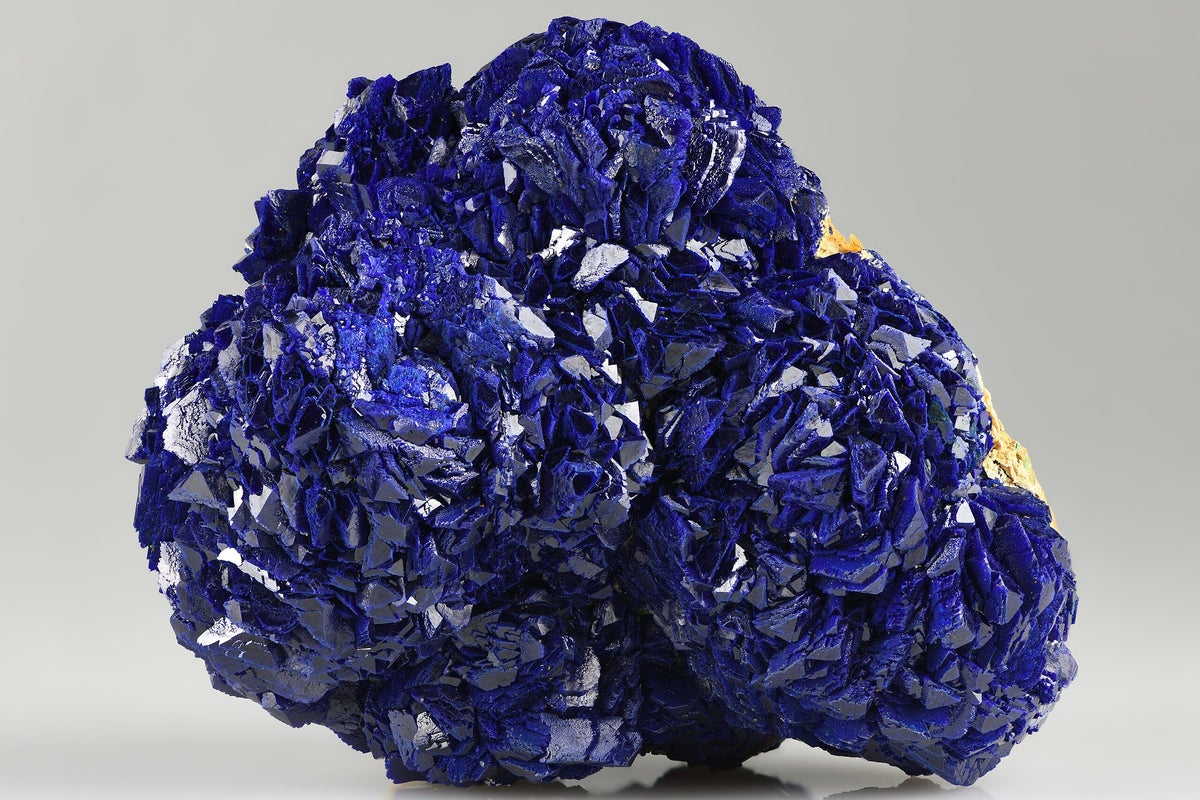
New archaeological research suggests that some Stone Age Europeans used vibrant blue pigments to decorate themselves or their possessions – and evidence from other sources raises the possibility that they may have done so as a form of protection against supernatural threats.
The vibrant blue pigment has been discovered by scientists in a prehistoric stone ‘paint box’ found in southwest Germany. It is the oldest blue paint ever found in Europe.
But the discovery has surprised archaeologists because virtually all palaeolithic paintings so far discovered in Europe and around the world were created mainly using red, white, yellow and black pigments.
Of the thousands of Stone Age paintings and other artworks found on every inhabited continent, only one group has so far featured blue paint (some blue-painted prehistoric Siberian figurines).
The virtual non-use of blue paint for producing permanent artworks suggests that, instead, the colour may have been mainly used for less long-lasting purposes – potentially to produce body art or to decorate textiles, and other artifacts.
Significantly, minerals for making blue pigments are rarer than sources for other primary colours.
When used to paint patterns on human skin or clothing or wooden masks, blue may therefore have had a very specific purpose – potentially some sort of symbolic meaning.
Certainly, still across wide swathes of the world, blue is often seen as a protective colour, capable of warding off evil. In line with that, it’s also often been perceived as being associated with divine and spiritual power.
The pigment, identified in the recently studied Stone Age paintbox, was made some 14,000 years ago by the side of the River Main (a major tributary of the Rhine) some ten miles east of Frankfurt.
The paint box, in which the scientists, from Aarhus University in Denmark, found traces of the pigment, was a 20-centimetre-wide natural bowl-shaped stone, capable of holding no more than 30 cubic centimetres of pigment.
The paint itself was made-up of ground-up azurite – a naturally occurring copper-based mineral found in Germany and many other parts of the world.
Although the bowl-shaped stone was found in an archaeological excavation some 50 years ago, the blue pigment it contained was only discovered during scientific investigations carried out in 2023 and 2024.
The discovery is being published today in the UK-based archaeological journal Antiquity and can be read online.
Another probable example of blue pigment being used comes from the Caucasus mountains of Georgia and was published just four months ago in the online science journal, PLOS One.
It showed that some 33,000 years ago, palaeolithic humans were processing a plant often associated with the manufacture of blue pigment.
What’s more, another relatively recent discovery, from 2017, has revealed that, around 20,000 years ago, Stone Age Siberians were making blue pigment to paint figurines – including highly stylised potentially ritual bone sculptures of women.
Archaeologists will now be on the lookout for other as-yet-undetected examples of blue pigment on Stone Age artefacts. It’s only within the past five to ten years that scientific techniques have advanced sufficiently to be capable of detecting otherwise invisible ancient pigments.
The new advances are likely to create a much more polychrome appreciation of the long-vanished Stone Age world.
The prehistoric paint box and its pigment was found in a palaeolithic riverside campsite. As well as the paintbox itself, archaeologists also found numerous stone tools and arrowheads – and a ring of stones used to hold down the perimeter of a circular tent.
The extended family who would have lived there were almost certainly not ancestral to modern European populations. Instead, they were probably among the last survivors of a major Stone Age culture, known as the Magdalenians.
“Our investigation has helped begin the process of widening our knowledge of the use of colour in prehistoric times,” said Aarhus University archaeologist, Dr Izzy Wisher, who led the team which discovered the Stone Age blue pigment.
“The colour range back then was almost certainly much wider than previously thought.
“Our discovery of blue pigment is likely to be just the tip of a prehistoric colour iceberg. We therefore hope that our new atomic and molecular level detection techniques will eventually allow us, for the first time, to reveal the Stone Age world in full colour,” said Dr Wisher, of the university’s Department of Archaeology and Heritage Studies.
